Your furry friend’s eyes are windows to their soul, but they’re also delicate organs that require special care. From playful romps to evening snuggles, your dog relies on their vision for nearly every aspect of their life. So, how can you ensure their peepers stay healthy and bright? In this comprehensive guide, we’ll delve deep into the world of doggy ocular care, exploring everything from common eye problems to preventive measures and daily maintenance routines. Let’s embark on this journey to keep those puppy-dog eyes sparkling!
Contents Overview
Understanding Your Dog's Eyes
Dogs’ eyes are marvels of biological engineering, finely tuned to serve their unique needs and abilities.
The Anatomy of Dog Eyes
Let’s take a closer look at the intricate anatomy of a dog’s eyes:
- Cornea: The cornea is the clear, dome-shaped outer layer covering the front of the eye. It acts as a protective barrier, helping to focus light onto the retina at the back of the eye.
- Iris: The colored part of the eye, the iris, controls the size of the pupil, which regulates the amount of light entering the eye. In dogs, the iris can vary in color and pattern, ranging from brown to blue and even multi-colored.
- Pupil: The pupil is the black center of the eye that dilates or constricts in response to light levels. In low light conditions, the pupil enlarges to allow more light in, while in bright light, it contracts to reduce the amount of light entering the eye.
- Lens: Behind the iris, the lens focuses light onto the retina. It adjusts its shape to allow the eye to focus on objects at different distances, enabling clear vision.
- Retina: The retina lines the back of the eye and contains specialized cells called photoreceptors, which convert light into electrical signals that are transmitted to the brain via the optic nerve. This process forms the basis of vision.
- Optic Nerve: The optic nerve carries visual information from the retina to the brain, where it is processed and interpreted. It is essentially the “communication highway” between the eye and the brain, allowing dogs to see and make sense of their surroundings.
Vision Abilities of Dogs
While dogs’ vision differs from humans’, they possess remarkable visual capabilities suited to their evolutionary history and lifestyle:
- Night Vision: Dogs have superior night vision compared to humans, thanks to a higher density of rod cells in their retinas. This adaptation allows them to navigate and hunt in low-light conditions effectively.
- Motion Detection: Dogs have a keen ability to detect motion, making them excellent hunters and companions. Their sensitive retinas and quick visual processing enable them to track moving objects with precision.
- Limited Color Vision: While dogs can see colors, their color perception is less vivid than humans’. They primarily perceive the world in shades of blue and yellow, with limited discrimination of reds and greens.
Tear Production and Eye Health
Tears play a crucial role in maintaining the health and function of a dog’s eyes:
- Tear Film: Dogs produce tears to lubricate and protect their eyes, forming a tear film that helps remove debris and foreign particles. This film also contains enzymes and antibodies that defend against infections.
- Blinking: Dogs blink to spread tears across the surface of their eyes, keeping them moist and clean. Blinking also helps flush out irritants and maintain optimal eye health.
- Tear Drainage: Excess tears drain through small ducts located at the inner corner of the eye, known as the lacrimal puncta, and into the nasal cavity. This drainage system helps prevent tear overflow and maintains a healthy tear film.
Understanding the anatomy and function of your dog’s eyes can deepen your appreciation for these remarkable sensory organs and guide you in providing the care and attention they deserve. By nurturing their ocular health and addressing any issues promptly, you can ensure a lifetime of clear-eyed adventures with your furry friend.
Signs of Healthy Eyes vs. Potential Problems
Your dog’s eyes are not only windows to their soul but also indicators of their overall health. Recognizing the signs of healthy eyes versus potential problems is essential for proactive eye care. Let’s explore these signs in detail:
Healthy Eyes
- Clear, Bright Appearance: Healthy eyes should appear clear and bright, with no cloudiness or opacity. The whites of the eyes (sclera) should be white, not yellow or red.
- Consistent Tear Production: Adequate tear production is crucial for maintaining eye health. A healthy dog’s eyes should be moist and free from excessive dryness.
- Normal Pupil Size and Reaction to Light: The pupil size should be appropriate for the lighting conditions, contracting in bright light and dilating in dim light. Additionally, the pupils should constrict briskly when exposed to light.
- Minimal Blinking or Squinting: Healthy dogs typically blink regularly to spread tears across the surface of their eyes and remove debris. They should not exhibit excessive blinking or squinting, which may indicate discomfort or irritation.
Potential Problems
- Redness or Inflammation: Redness around the eyes or within the conjunctiva (the thin, transparent membrane covering the inner eyelids and the white part of the eyeball) can signal inflammation or irritation. It may be accompanied by swelling and discomfort.
- Excessive Tearing or Discharge: While some tearing is normal, excessive tearing or discharge, especially if it is thick, colored, or foul-smelling, may indicate an underlying issue such as conjunctivitis, infection, or blocked tear ducts.
- Cloudiness or Opacity: Cloudiness or opacity in the eyes can be a sign of various conditions, including cataracts, corneal ulcers, or lens degeneration. These conditions can impair vision and require prompt veterinary attention.
- Persistent Squinting or Pawing at the Eyes: Dogs may squint or paw at their eyes if they are experiencing pain, discomfort, or irritation. Persistent squinting or rubbing of the eyes warrants investigation by a veterinarian to identify and address the underlying cause.
Preventive Measures: Shielding Your Dog's Eyes from Harm
Just like humans, dogs’ eyes are susceptible to a variety of hazards in their environment. From UV radiation to airborne debris, there are several potential threats that can compromise your furry friend’s eye health. Taking proactive measures to shield your dog’s eyes from harm can help prevent injuries, infections, and other eye-related issues. Here’s how you can protect your canine companion’s precious peepers:
- Regular Veterinary Check-ups:
- Schedule routine veterinary examinations to assess your dog’s overall health, including their eyes.
- Early detection of eye problems can lead to timely intervention and better outcomes for your dog’s ocular health.
- Proper Nutrition:
- Feed your dog a balanced diet rich in essential nutrients, including vitamins A and C, which promote eye health.
- Consult with your veterinarian to ensure your dog’s diet meets their specific nutritional needs.
- Gentle Grooming:
- Keep fur around the eyes trimmed to prevent irritation and the accumulation of debris.
- Use pet-safe grooming tools and techniques to avoid accidentally injuring your dog’s eyes during grooming sessions.
- Protective Eyewear:
- Consider using doggy goggles or sunglasses during outdoor activities to shield your pup’s eyes from harmful UV rays, dust, debris, and foreign objects.
- Choose goggles specifically designed for dogs, ensuring a comfortable fit and adequate protection without obstructing vision or causing discomfort.
- Introduce your dog to wearing protective eyewear gradually, using positive reinforcement techniques to associate it with positive experiences.
- Avoidance of Environmental Hazards:
- Be mindful of potential hazards in your dog’s environment, such as sharp objects, chemicals, and plants that can cause eye injuries or irritation.
- Keep your dog away from areas where there is a high risk of exposure to irritants or pollutants, such as construction sites or heavily trafficked roads.
- Regular Exercise and Mental Stimulation:
- Engage your dog in regular exercise and mental stimulation to promote overall well-being and reduce stress, which can impact eye health.
- Provide safe and enriching activities that stimulate your dog’s senses without putting their eyes at risk of injury.
- Hygiene Practices:
- Maintain good hygiene practices to reduce the risk of eye infections and irritation.
- Keep your dog’s living environment clean and free from potential sources of contamination, such as dirty bedding or food/water bowls.
- Wash your hands before and after handling your dog’s eyes or administering eye medications to prevent the spread of infection.
Common Eye Problems in Dogs: Recognizing and Addressing Issues
Just like humans, dogs can experience a variety of eye problems and diseases that can affect their vision and overall well-being. Recognizing the signs and symptoms of these conditions is crucial for early intervention and treatment. Here’s a comprehensive overview of some common eye problems and diseases in dogs:
- Conjunctivitis (Pink Eye):
- Description: Conjunctivitis is inflammation of the conjunctiva, the thin membrane covering the inner surface of the eyelids and the white part of the eyeball.
- Causes: Conjunctivitis can be caused by bacterial or viral infections, allergies, irritants (such as smoke or chemicals), or foreign objects lodged in the eye.
- Symptoms: Redness, swelling, discharge (clear, yellow, or green), squinting, rubbing or pawing at the eyes, and increased tear production.
- Treatment: Treatment may include topical ointments or eye drops containing antibiotics or anti-inflammatory medications. Severe cases may require oral medications or other interventions prescribed by a veterinarian.
- Corneal Ulcers:
- Description: Corneal ulcers are superficial or deep sores on the cornea, the clear outer layer covering the front of the eye.
- Causes: Corneal ulcers can result from trauma (such as scratches or foreign objects), infections, dry eye syndrome, or abnormalities in tear production.
- Symptoms: Excessive tearing, squinting, redness, cloudiness or opacity in the cornea, pawing or rubbing at the eye, and sensitivity to light.
- Treatment: Treatment typically involves topical medications (such as antibiotic or antifungal eye drops), pain management, and protecting the eye from further damage. Severe cases may require surgical intervention.
- Cataracts:
- Description: Cataracts are opacities or cloudiness in the lens of the eye, which can interfere with vision and eventually lead to blindness.
- Causes: Cataracts can be congenital (present at birth) or acquired, resulting from aging, diabetes mellitus, genetic predisposition, or trauma.
- Symptoms: Gradual loss of vision, cloudiness or opacity in the lens, changes in eye color (e.g., a bluish-gray tint), and difficulty navigating in familiar surroundings.
- Treatment: Treatment for cataracts may include surgical removal of the affected lens (phacoemulsification) followed by implantation of an artificial lens, if suitable candidates for surgery.
- Glaucoma:
- Description: Glaucoma is a condition characterized by increased pressure within the eye, which can damage the optic nerve and lead to vision loss.
- Causes: Glaucoma can be primary (genetic predisposition) or secondary to other eye conditions, such as uveitis, lens luxation, or tumors.
- Symptoms: Redness, excessive tearing, squinting, dilated pupils, cloudy cornea, pain (manifested as reluctance to open the eye or rubbing at the eye), and vision loss.
- Treatment: Treatment aims to reduce intraocular pressure and preserve vision. Options may include topical or oral medications, laser therapy, or surgical procedures (such as drainage implants or cyclophotocoagulation).
- Cherry Eye (Nictitans Gland Prolapse):
- Description: Cherry eye is the prolapse or protrusion of the nictitans gland (third eyelid) from the inner corner of the eye, resulting in a red, fleshy mass.
- Causes: Cherry eye occurs when the ligaments supporting the nictitans gland weaken or malfunction, allowing the gland to pop out of its normal position.
- Symptoms: Red, swollen mass in the inner corner of the eye (resembling a cherry), excessive tearing, squinting, and discomfort.
- Treatment: Treatment typically involves surgical repositioning or removal of the prolapsed gland to prevent complications and restore normal eye function.
- Entropion and Ectropion:
- Description: Entropion is a condition where the eyelid rolls inward, causing the eyelashes to rub against the surface of the eye, leading to irritation and corneal damage. Ectropion is the opposite, where the eyelid droops or sags outward, exposing the inner surface of the eyelid and increasing the risk of irritation and infection.
- Causes: Entropion and ectropion can be congenital (present at birth) or acquired due to aging, trauma, or underlying medical conditions.
- Symptoms: Excessive tearing, squinting, redness, irritation, corneal ulcers or abrasions, and recurrent eye infections.
- Treatment: Treatment may involve surgical correction to reposition the eyelids and alleviate irritation and discomfort.
Daily Eye Care Routine: Nurturing Your Dog's Precious Peepers
Maintaining a daily eye care routine for your dog is essential for promoting optimal eye health and preventing common eye problems. By incorporating simple yet effective practices into your daily routine, you can help keep your furry friend’s eyes clean, comfortable, and free from irritation. Here’s how to nurture your dog’s precious peepers with a daily eye care regimen:
- Gently Wipe Around the Eyes with a Damp Cloth:
- Use a clean, soft cloth dampened with lukewarm water to gently wipe around your dog’s eyes.
- Start from the inner corner and gently move outward, avoiding direct contact with the eyes.
- This helps remove any dirt, debris, or discharge that may have accumulated around the eyes, reducing the risk of irritation and infection.
- Inspect the Eyes for Any Abnormalities:
- Take a few moments each day to closely examine your dog’s eyes for any signs of redness, swelling, discharge, or cloudiness.
- Check for foreign objects or debris that may be lodged in the eyes, such as dust, hair, or plant material.
- Look for excessive tearing, squinting, or rubbing at the eyes, which may indicate discomfort or an underlying issue that requires attention.
- Administer Prescribed Medications:
- If your veterinarian has prescribed eye drops, ointments, or other medications for your dog, ensure they are administered as directed.
- Follow the instructions provided by your veterinarian carefully, including dosage, frequency, and duration of treatment.
- Use gentle, steady pressure to apply medications to your dog’s eyes, being careful to avoid touching the tip of the applicator to the eyes or surrounding area.
- Protective Measures During Outdoor Activities:
- When engaging in outdoor activities with your dog, such as walks or playtime, consider using protective eyewear, especially in bright sunlight or windy conditions.
- Doggy goggles or sunglasses can help shield your dog’s eyes from harmful UV rays, dust, debris, and potential eye injuries.
- Introduce your dog to wearing protective eyewear gradually, using positive reinforcement techniques to make it a positive and enjoyable experience.
- Monitor Tear Production and Eye Comfort:
- Pay attention to your dog’s tear production and overall eye comfort throughout the day.
- If you notice any changes in tear production, such as excessive tearing or dryness, or if your dog displays signs of discomfort or irritation, consult with your veterinarian for further evaluation and guidance.
- Prompt attention to any abnormalities or concerns can help prevent minor issues from escalating into more serious problems.
Bottom Line
Your dog’s eyes are not just windows to their soul; they’re also vital sensory organs that deserve special attention and care. By understanding the anatomy of your dog’s eyes, recognizing signs of potential problems, and implementing preventive measures and daily care routines, you can help safeguard their ocular health and ensure many years of clear-eyed companionship. Stay vigilant, stay informed, and always prioritize your furry friend’s well-being, starting with those precious peepers!

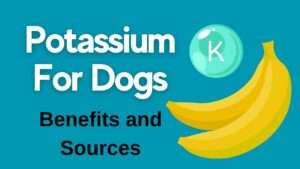







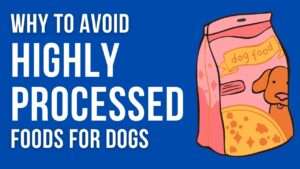




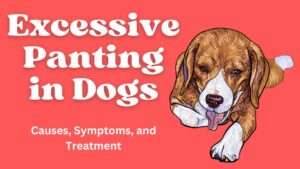
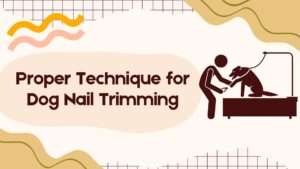
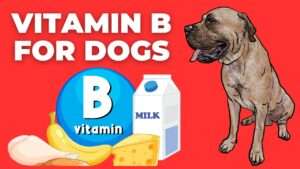

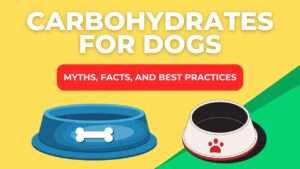
















+ There are no comments
Add yours